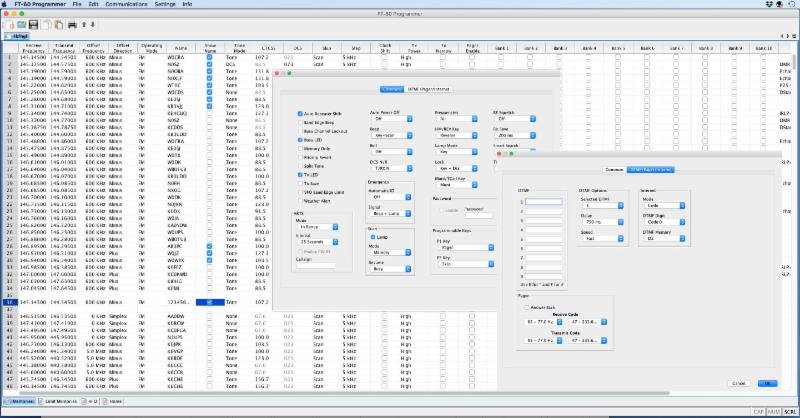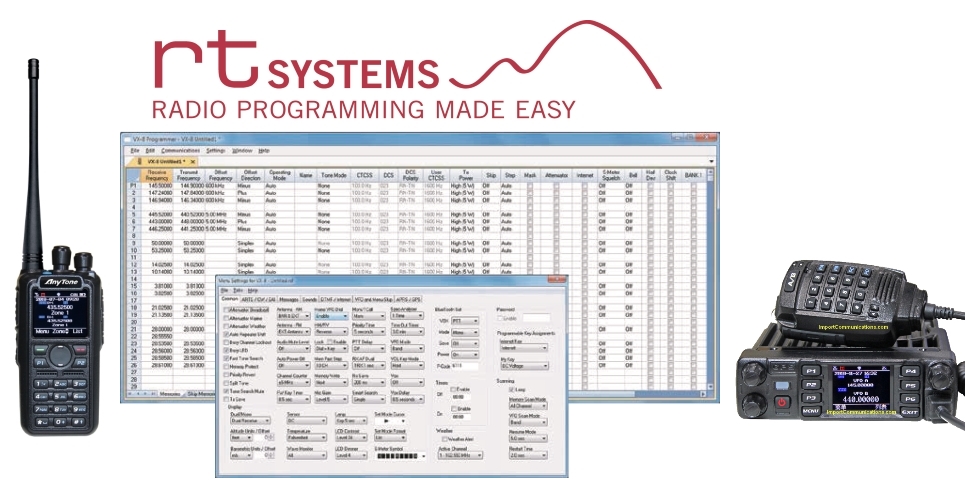RT systems software is a vital component in today’s fast-paced industries, revolutionizing the way data is processed in real-time. This article delves into the key functions and features of RT systems software, shedding light on its importance across various sectors.
Exploring the implementation challenges, security measures, advantages, and future trends in RT systems software, this comprehensive guide aims to provide a deep understanding of this cutting-edge technology.
Overview of RT Systems Software
Real-time (RT) systems software is a type of software that is designed to provide real-time processing and control of hardware devices. It is used in various industries to monitor and control systems in real-time, enabling quick decision-making and response to changing conditions.
RT systems software plays a crucial role in industries such as aerospace, automotive, manufacturing, telecommunications, and healthcare. These industries heavily rely on RT systems software to ensure the efficient operation of critical systems and processes.
Importance of Real-Time Systems in Various Industries
Real-time systems software is essential in industries where immediate responses to events are necessary to prevent accidents, optimize performance, or maintain system reliability. For example, in the aerospace industry, RT systems software is used in aircraft control systems to ensure safe and efficient flight operations. In the healthcare industry, RT systems software is utilized in medical devices for monitoring patients and delivering precise treatments in real-time.
- Automotive Industry: RT systems software is used in vehicle control systems to ensure safe and efficient operation of cars, trucks, and autonomous vehicles.
- Manufacturing Industry: RT systems software is employed in industrial automation to control processes, monitor production lines, and optimize resource utilization.
- Telecommunications Industry: RT systems software is utilized in network management systems to monitor network performance, detect anomalies, and ensure seamless communication services.
Features of RT Systems Software
Real-Time (RT) Systems Software is equipped with a variety of features that make it a powerful tool for processing time-sensitive data efficiently. Some key features of RT systems software include:
1. Real-Time Data Processing
- RT systems software is designed to process data instantaneously as it is received, ensuring timely decision-making and response.
- It allows for the monitoring and analysis of data in real-time, enabling quick detection of anomalies or trends.
- Real-time data processing reduces the latency between data collection and action, improving overall system efficiency.
2. High Performance and Scalability
- RT systems software is optimized for high performance, capable of handling large volumes of data without compromising speed or accuracy.
- It offers scalability to accommodate growth and increased data processing requirements, ensuring flexibility and adaptability.
- Through efficient resource management, RT systems software can maintain performance levels even under high workloads.
3. Data Visualization and Reporting
- RT systems software provides tools for data visualization, allowing users to create interactive dashboards and reports for better insights.
- It offers customizable reporting features to present data in a meaningful way, facilitating informed decision-making.
- Visual representations of data help identify patterns, trends, and outliers quickly, enhancing data analysis capabilities.
4. Fault Tolerance and Reliability
- RT systems software is built with fault tolerance mechanisms to ensure system reliability and data integrity.
- It includes features for data backup, redundancy, and failover to prevent data loss and maintain continuous operation.
- By minimizing the risk of system failures, RT systems software enhances overall system availability and resilience.
Implementation of RT Systems Software

Implementing RT Systems Software in an organization involves careful planning, coordination, and execution to ensure a successful integration. It is essential to follow a structured approach to minimize disruptions and maximize the benefits of the software.
Process of Implementing RT Systems Software
The process of implementing RT Systems Software typically involves the following steps:
- Evaluating the organization’s needs and requirements for the software.
- Selecting the appropriate RT Systems Software solution based on the evaluation.
- Planning the implementation process, including setting timelines, allocating resources, and defining key milestones.
- Installing the software on the organization’s systems and servers.
- Configuring the software to align with the organization’s workflows and processes.
- Testing the software to ensure functionality and performance.
- Training employees on how to use the software effectively.
- Rolling out the software across the organization and providing ongoing support.
Challenges and Considerations in Integrating RT Systems Software
Integrating RT Systems Software into an organization can present several challenges and considerations, including:
- Resistance to change from employees accustomed to existing systems.
- Data migration and compatibility issues with legacy systems.
- Ensuring data security and compliance with regulations.
- Managing the costs associated with implementation and training.
- Aligning the software with the organization’s strategic objectives.
Examples of Successful Implementations of RT Systems Software
Several organizations have successfully implemented RT Systems Software to improve their operations and efficiency. For example:
Company XYZ implemented RT Systems Software to streamline their project management processes, resulting in a 20% increase in productivity.
Organization ABC integrated RT Systems Software to enhance their customer service operations, leading to a 15% reduction in response times.
Security in RT Systems Software

Security in RT systems software is crucial to protect sensitive data, prevent unauthorized access, and ensure the smooth operation of real-time systems.
Importance of Security Measures
Implementing robust security measures in RT systems software is essential to safeguard critical infrastructure, confidential information, and prevent cyber attacks.
- Utilizing encryption techniques to secure data transmission and storage.
- Implementing access controls to restrict unauthorized users from accessing sensitive information.
- Regularly updating software and patches to address vulnerabilities and strengthen security.
Common Security Threats
RT systems software faces various security threats that can compromise the integrity and reliability of real-time operations.
- Denial of Service (DoS) attacks that disrupt the availability of real-time systems.
- Malware infections that can compromise the functionality of RT systems software.
- Spoofing attacks that impersonate legitimate users to gain unauthorized access.
Strategies for Securing RT Systems Software
Implementing effective security strategies is crucial to protect RT systems software from cyber threats and ensure uninterrupted operations.
- Conducting regular security audits to identify vulnerabilities and weaknesses in the system.
- Enforcing strong authentication mechanisms, such as multi-factor authentication, to verify user identities.
- Implementing network segmentation to isolate critical systems and prevent lateral movement of threats.
Advantages and Disadvantages of RT Systems Software
Real-time (RT) systems software offers numerous benefits and advantages for users, but it also comes with its own set of limitations and drawbacks. Let’s explore the advantages and disadvantages of using RT systems software and compare it with traditional systems in terms of performance and efficiency.
Advantages of RT Systems Software
- Real-time processing: RT systems software allows for immediate processing of data and tasks, ensuring timely responses to critical events.
- Improved performance: RT systems software can enhance system performance by reducing latency and improving overall efficiency.
- Enhanced accuracy: With real-time monitoring and processing, RT systems software can provide more accurate and up-to-date information.
- Increased productivity: The ability to automate tasks and processes in real-time can lead to increased productivity and efficiency.
Disadvantages of RT Systems Software
- Complexity: Implementing and managing RT systems software can be complex, requiring specialized knowledge and skills.
- Cost: RT systems software can be costly to implement and maintain, especially for smaller businesses or organizations.
- Resource-intensive: Real-time processing can be resource-intensive, requiring significant computing power and infrastructure.
- Compatibility issues: RT systems software may have compatibility issues with existing systems or hardware, leading to integration challenges.
Comparison with Traditional Systems
- Performance: RT systems software generally outperforms traditional systems in terms of processing speed and responsiveness.
- Efficiency: RT systems software is more efficient in handling real-time data and critical tasks compared to traditional systems.
- Cost-effectiveness: Traditional systems may be more cost-effective for simpler operations, while RT systems software is more suitable for complex, time-sensitive applications.
- Scalability: RT systems software can be more scalable to accommodate growth and changing demands compared to traditional systems.
Future Trends in RT Systems Software
As technology continues to evolve at a rapid pace, the future of RT systems software is likely to be influenced by emerging trends that are set to shape the industry. Advancements in technologies such as Artificial Intelligence (AI) and Internet of Things (IoT) are expected to have a significant impact on the development of RT systems software.
Impact of AI on RT Systems Software
AI is revolutionizing the way real-time systems operate by enabling them to learn from data, make decisions, and adapt to changing environments without human intervention. In the future, AI-powered algorithms can enhance the efficiency and performance of RT systems software by optimizing processes, predicting failures, and improving overall system reliability.
Role of IoT in RT Systems Software
The integration of IoT devices with RT systems software allows for seamless communication and data exchange between interconnected devices. This connectivity enables real-time monitoring, control, and automation of systems, leading to improved productivity, reduced downtime, and enhanced decision-making capabilities.
Applications of RT Systems Software in Emerging Industries
With the advancement of RT systems software, we can expect to see its application in various emerging industries such as autonomous vehicles, smart cities, healthcare, and industrial automation. These sectors can benefit from the real-time data processing, analysis, and control capabilities offered by RT systems software to optimize operations and enhance performance.
Final Review

In conclusion, RT systems software stands as a powerful tool that offers unparalleled efficiency and accuracy in data processing. As industries continue to evolve, embracing the advancements in RT systems software will be crucial for staying ahead in the digital age.
